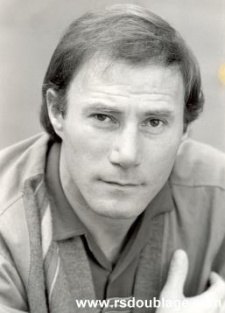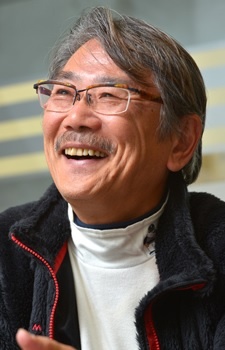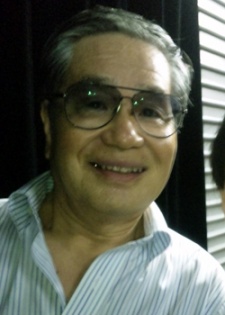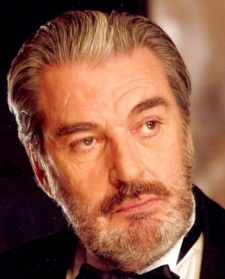
Ashita no Joe 2
Summary: Yabuki Joe is left downhearted and hopeless after a certain tragic event. In attempt to put the past behind him, Joe leaves the gym behind and begins wandering. On his travels he comes across the likes of Wolf Kanagushi and Goromaki Gondo, men who unintentionally fan the dying embers inside him, leading him to putting his wanderings to an end. His return home puts Joe back on the path to boxing, but unknown to himself and his trainer, he now suffers deep-set issues holding him back from fighting. In attempt to quell those issues, Carlos Rivera, a world renowned boxer is invited from Venezuela to help Joe recover.
Description
Yabuki Joe is left downhearted and hopeless after a certain tragic event. In attempt to put the past behind him, Joe leaves the gym behind and begins wandering. On his travels he comes across the likes of Wolf Kanagushi and Goromaki Gondo, men who unintentionally fan the dying embers inside him, leading him to putting his wanderings to an end. His return home puts Joe back on the path to boxing, but unknown to himself and his trainer, he now suffers deep-set issues holding him back from fighting. In attempt to quell those issues, Carlos Rivera, a world renowned boxer is invited from Venezuela to help Joe recover.
Available At
Warning: Array to string conversion in /home/hianime.me.uk/public_html/anime.php on line 243
Array
Ashita no Joe 2 Pictures
Ashita no Joe 2 Review
Ashita no Joe 2 — Yabuki Joe is left downhearted and hopeless after a certain tragic event. This overview is intentionally spoiler-free and focuses on tone and intent rather than plot specifics.
Thematically, It sits firmly within Drama, Sports conventions as a TV work and has garnered attention (MAL score: 8.76). This work explores character dynamics, tonal shifts, and the interplay between narrative ambition and execution. The story's pacing and tonal choices are crafted to complement the central ideas, often emphasizing atmosphere and emotional truth over explicit exposition. The show's ability to evoke a consistent mood — whether melancholic, exuberant, or contemplative — is a recurring strength, and the scenes are constructed so viewers can infer stakes without needing explicit spoilers.
Characterization is a core pillar here. Protagonists and supporting figures are written with distinct motivations and narrative roles; even when archetypal, the series invests in small behavioral details that make choices feel earned. Character arcs are handled with an eye for gradualism: development often arrives through incremental beats rather than abrupt, expository shifts. The interactions between characters create texture, and relationships are used to illuminate both personal flaws and larger thematic concerns.
On the visual front, production values play a significant role. The animation quality varies by sequence but frequently showcases thoughtful direction and composition. Background art, framing, and color palettes are used deliberately to support tone — quieter scenes favor muted palettes while action or heightened emotional beats employ brighter, more kinetic visuals. Direction choices, such as camera movement and shot selection, often elevate scenes beyond their raw script, creating moments that linger in the viewer's mind.
The soundscape — score, incidental music, and sound design — complements the visual language. Music cues are placed to maximize emotional resonance without manipulating the audience with melodrama; this restraint often leads to more authentic emotional payoff. Sound design punctuates key moments, and when the series leans on silence, those quieter moments are given weight by measured audio choices.
Pacing and structure are handled with craft. Episodes are arranged to build tension and release methodically, and the narrative rarely rushes through important emotional beats. That said, the deliberate pacing may feel slow to viewers who prefer faster plot turnover; the reward is greater nuance and an accumulation of meaning across the series. Accessibility is generally good — one can appreciate surface-level pleasures, while repeat or attentive viewing reveals additional layers.
No title is without flaws. Occasional unevenness in subplots or variable animation across episodes can be distracting. Some tonal shifts might feel abrupt if you expect uniformity; others will argue that those shifts are purposeful. These are worth noting, but they seldom undercut the larger achievements of the work.
In sum, Ashita no Joe 2 offers a rich experience for viewers who value character-driven storytelling, considered visual design, and a soundtrack that supports rather than overwhelms. For fans of Drama, Sports, this is an especially rewarding watch. It's recommended for those who appreciate layered narratives and artistry in animation, and best approached with patience and attention to nuance.
Characters & Voice Actors

Shiraki, Yoko
Main

Shiraki, Yoko
Main

Shiraki, Yoko
Main

Shiraki, Yoko
Main

Tange, Danpei
Main

Tange, Danpei
Main

Tange, Danpei
Main

Tange, Danpei
Main

Yabuki, Joe
Main

Yabuki, Joe
Main

Yabuki, Joe
Main

Aoyama, Mamoru
Supporting

Aoyama, Mamoru
Supporting

Chuukichi
Supporting

Dr. Kininski
Supporting

Gaikotsu
Supporting
Gondo, Goromaki
Supporting

Gondo, Goromaki
Supporting

Gondo, Goromaki
Supporting

Harimau
Supporting
Staff

Dezaki, Osamu
Director, Storyboard

Nishikubo, Mizuho
Episode Director

Takeuchi, Yoshio
Episode Director, Storyboard

Takayashiki, Hideo
Script

Césari, Jean-Paul
Theme Song Performance

Obo, Takeshi
Theme Song Performance

Araki, Ichirou
Music

Awai, Shigeki
In-Between Animation

Chiba, Tetsuya
Original Creator

Fukushima, Atsuko
Key Animation

Jinguu, Satoshi
Key Animation

Kajiwara, Ikki
Original Creator

Miyao, Gaku
Key Animation

Morimoto, Kouji
Key Animation, In-Between Animation

Motoki, Hisatoshi
Key Animation

Nakamura, Ryuutarou
Key Animation

Oga, Kazuo
Art Director

Oohashi, Manabu
Key Animation

Ootsuka, Shinji
Key Animation

Sasakado, Nobuyoshi
Key Animation